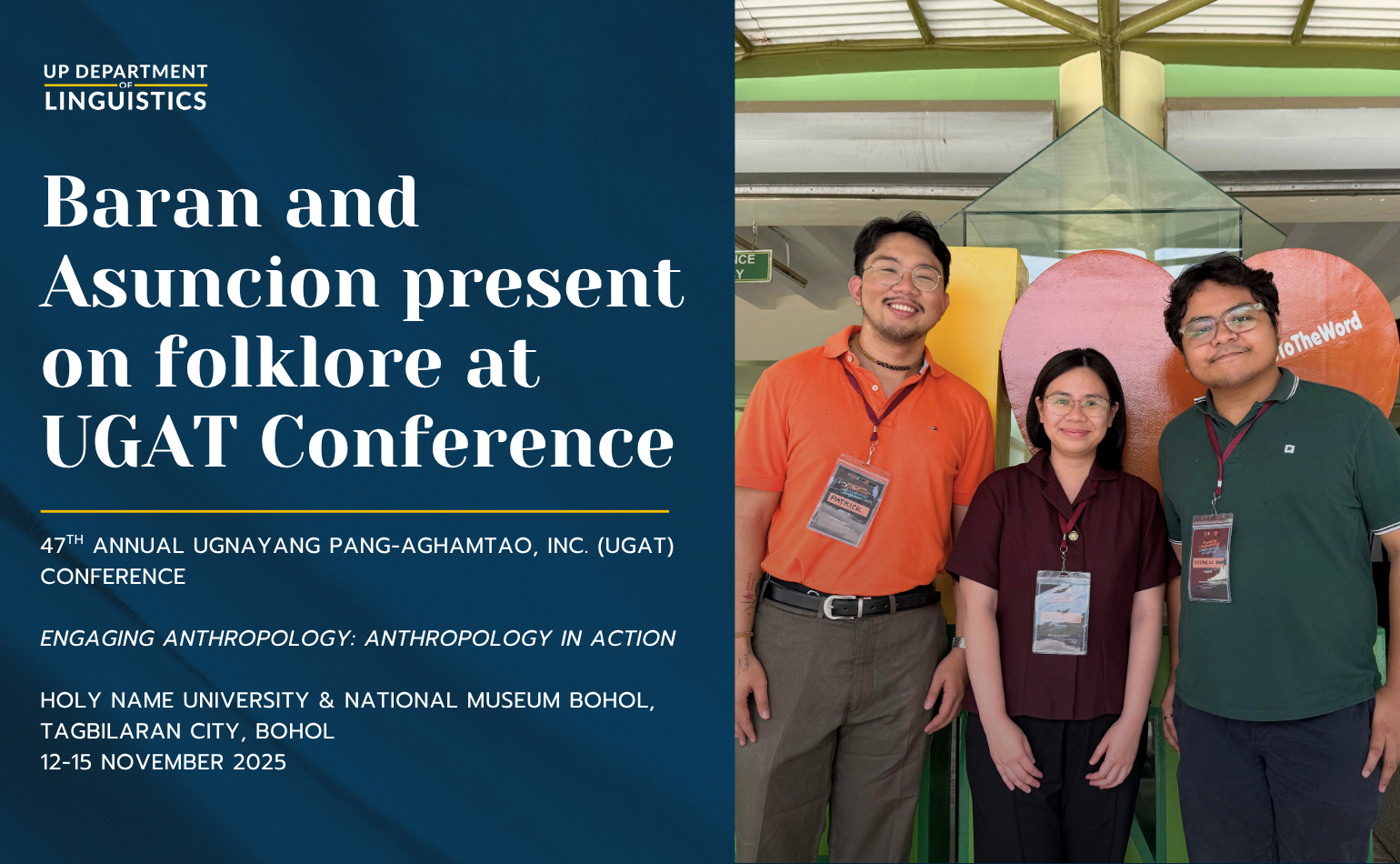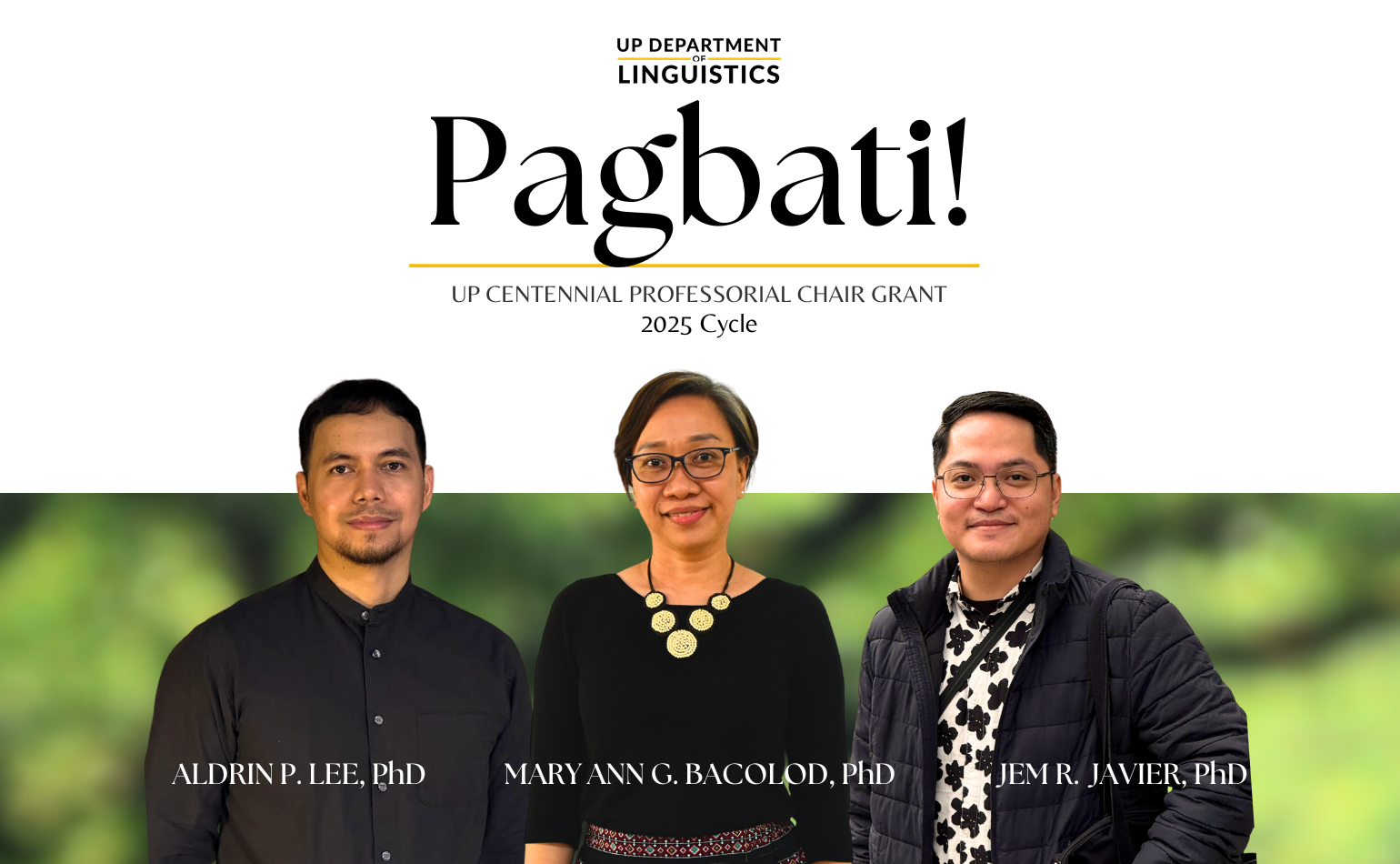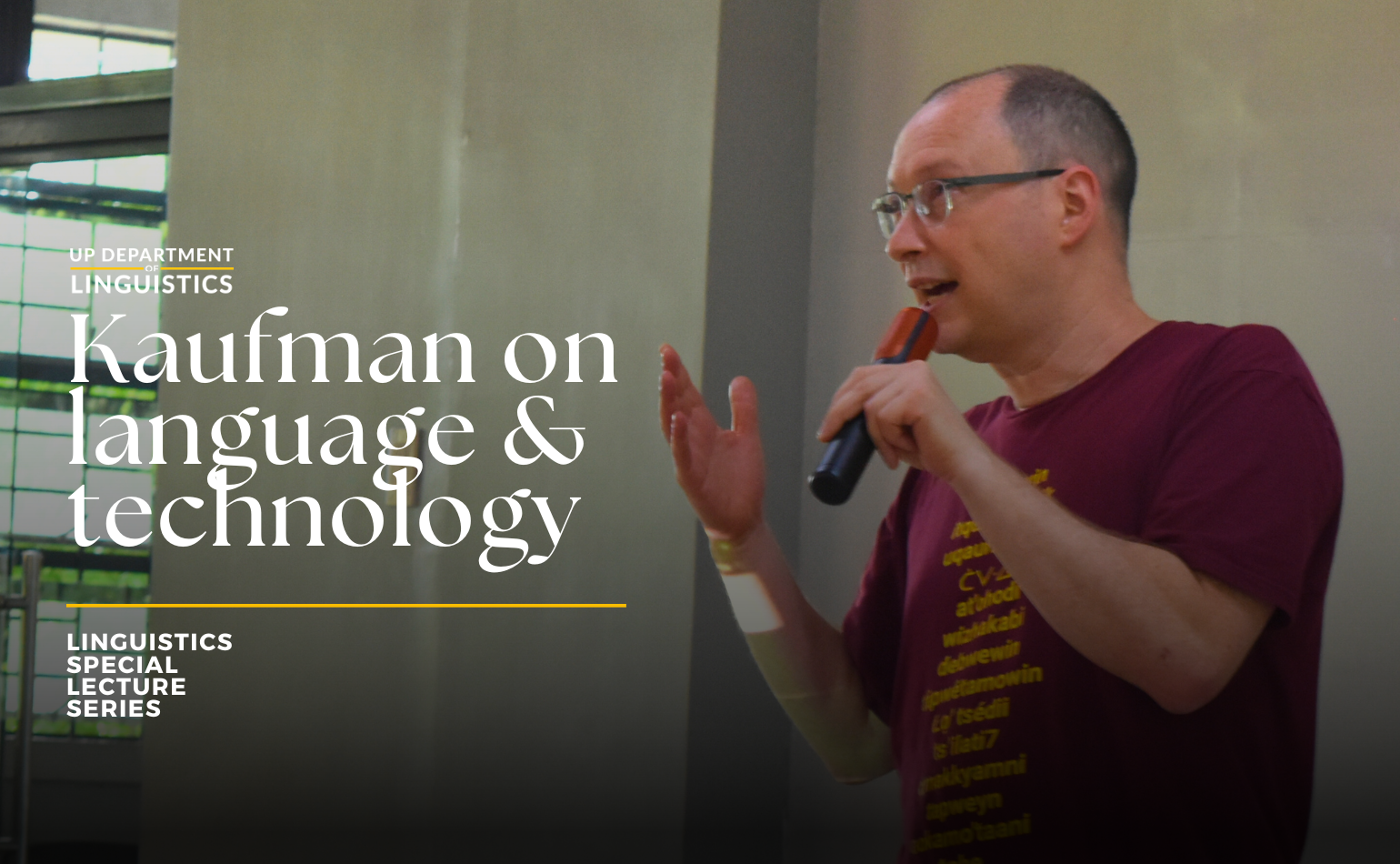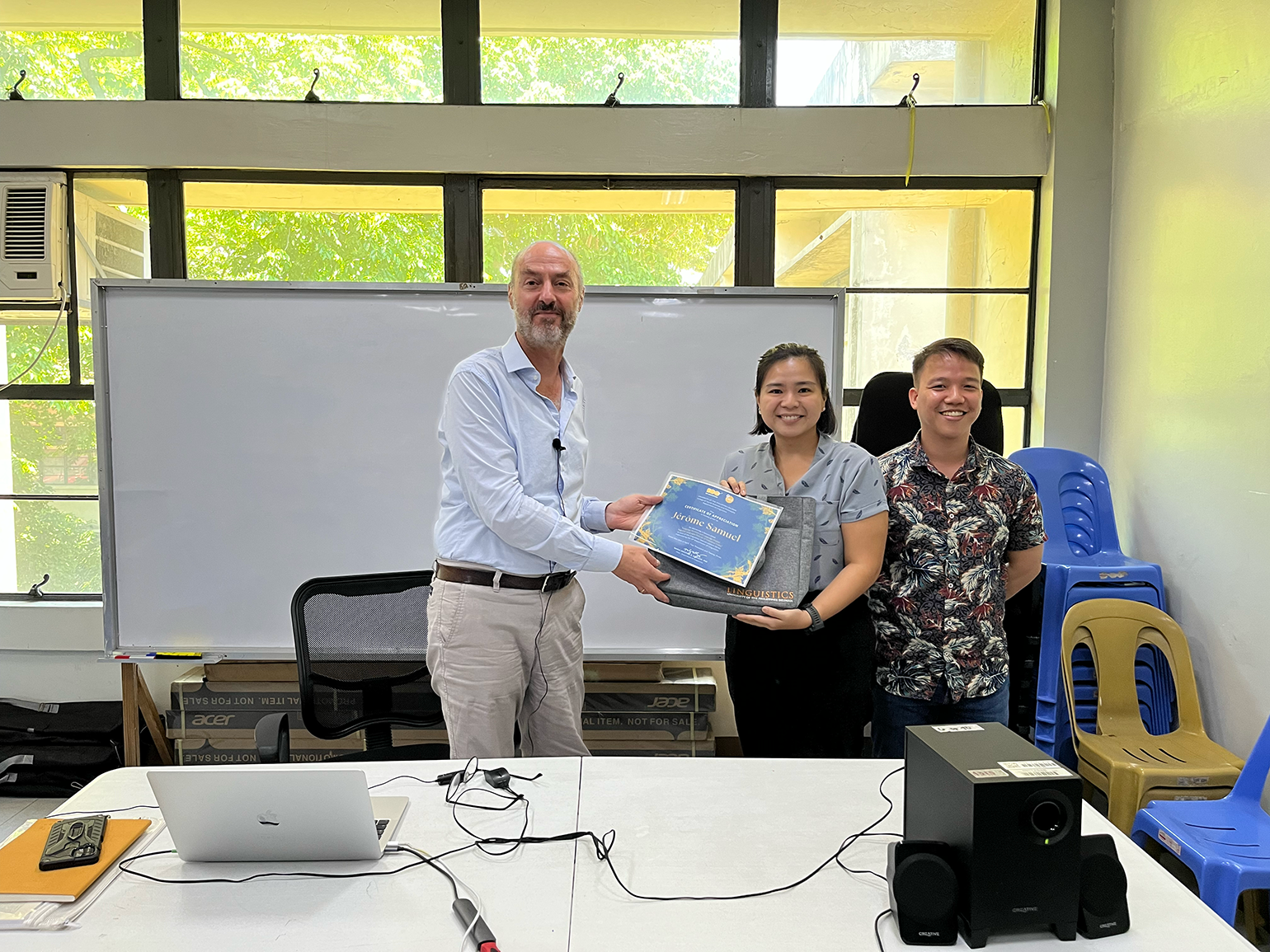
“We don’t speak in the standards daily,” Jerome Samuel, director of IRASEC (Institut de Recherche Sur l’Asie du Sud-Est Contemporaine / Research Institute on Contemporary Southeast Asia) said when explaining the sociolinguistic reality for speakers in rural contexts, during the third edition of this year’s Linguistics Special Lecture Series (LSLS) held last April 20. His lecture titled, “Language Attrition and Language Display: Regional Language Policies in Indonesia Today,” tackled the declining use of regional vernaculars and Indonesian subclasses in the Southeast Asian nation, and what laws and regulations were passed to emphasize or react to the phenomenon.
The in-person event was held at Palma Hall room 1315, to a diverse audience composed of sociolinguistics students, Indonesian language speakers/instructors, and scholars of Filipino and Philippine languages.
Samuel, who also teaches Indonesian, began his lecture by mentioning that to better understand the mother tongue, one must need to master a regional language. Indonesian, Javanase, Balinese, Palembang (close to Malay), “Batak” (which, according to Samuel, is actually not a single distinct language, but a cluster of closely related dialects and languages), Papua Malay, Manado Malay, and English were mentioned as some of the languages used in different regions; with Javenese, the first regional language, being the mother tongue of around 40% of the population.
The main portion of the presentation was angled around three questions: (1) what is the current situation of the regional languages? (2) what forces are at work today? and (3) what is the fate of the regional languages?
The place for regional languages vs. Indonesian
Indonesia, which has a population of about 275 million people, has more than 700 local languages (around 300 of which are Papuan languages) spoken throughout the archipelago. In addition to this, Javanese, Sundanese, and Balinese are considered to be major languages; but Malay, interestingly, is not part of the conversation on regional languages. Among foreign vernaculars, English is growing, but its use is still limited; while Chinese and Dutch languages have fallen out of use in the country.
According to Samuel, Indonesian has a very strong historical and political narrative, which helped propel itself into being the sole national and official language. It has been widely accepted and strongly promoted—presented as the language of unity (Bahasa Indonesia, bahasa persatuan)—since 1928 and used as a symbol for nationalism. The narratives surrounding it, he added, are still strong up to present.
For the regional languages, during the later decades of the 20th century, an ideology of development was applied, making them symbols of regional identities. It was also during this period that the notion of Indonesian being enriched by regional languages arose, the regional languages still considered to be subordinate to Indonesian. A soft monolingual policy was then imposed, and in the official position for regional languages, no ban was set, but there was no promotion as well.
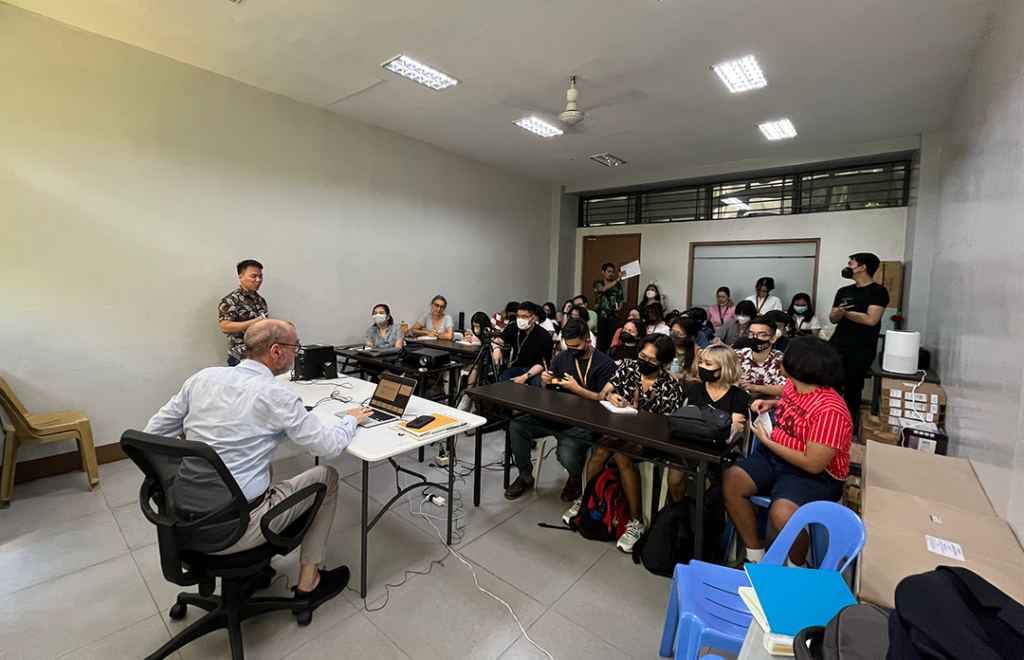
Language attrition in Indonesia
Speaking on the reactions to the slow death and attrition of regional languages, Samuel mentioned that “for the people in the streets, for the people in the shops, regional languages are more important than the standard.” The increasing concern for the loss of these regional languages came hand-in-hand with the decline of the stress on standard Indonesian and the rise of the use of non-standard varieties in speakers.
Additionally, according to him, the current figures do not sufficiently show the other factors surrounding language death in Indonesia: the fragility of the regional languages (75 are dying, 265 are endangered), the interruption of intergenerational transmission (which is mostly an urban and middle-class phenomenon), the emerging global awareness on attrition, the replacement of the community by religious affiliation, and the varying degrees of regional language endangerment (local lingua francas and regional/national substandard languages and dialects may be experiencing vastly different levels of endangerment).
A new legislative and regulatory apparatus
To address this attrition, Samuel explained, several policies were enacted, the first of which is the wave of “decentralization policies” that started in 2002. Several local and regional regulations were adopted, giving special position to a few provinces. However, the provisions were unclear. In 2009, a law “on the flag, language and symbols of the State” originally included “…Indonesia’s linguistic diversity is a gift of God..” in the initial preamble, but was later removed. Decrees 57 in 2014 and 63 in 2019 discuss the “development, promotion and protection of languages and literatures, and the advancement of Indonesian language functions” and “the use of Indonesian language,” respectively, and as of late last year, a project (which started in 2017) on the regional languages was still to be finished.
Finally, a few more policies were passed for education, radio, and television, but implementation remains at the local level and abiding by them has so far been done to varying degrees.
The open forum that followed tackled language policies in other countries, intellectualization of a language, and the role of government institutions and universities in designing provisions.
This third installment of LSLS is one of the many events planned by the Department as it celebrates its centennial founding anniversary. Keep following the UP Department of Linguistics website and its social media pages for other events and other information.
You can watch the recording of the lecture on the Department’s YouTube channel.
Published by John Michael Vincent de Pano

